By Karla Klein Albertson
.jpg)
Chasuble (back), Mexico, circa 1750, silk and metallic thread embroidered on silk satin, center back length 82-5/8 by 27½ inches. Museo Franz Mayer, Mexico City.
AUSTIN, TEXAS – Clothes still make the man or woman, in the sense that they create our impression of the wearer. We fancy that the stunning outfits paraded on the red carpet at a film festival give us insight into the inner life of the stars encased therein. Or we make snap decisions in a Starbucks line about whether someone is headed to a construction crew, a law office or maybe the first Mass of the day.
While our fascination with what we wear may be unchanging, a new exhibition in the Blanton Museum of Art at the University of Texas at Austin – “Painted Cloth: Fashion and Ritual in Colonial Latin America” – puts the focus on a particular selection: both civil and religious fabrics and garments in the Eighteenth Century and surrounding decades, as they were displayed in the Spanish Americas.
Before the opening in August, director Simone Wicha wrote, “The elaborate fabrics, fashion and other richly textured works in this show are not only a feast for the eyes, they also will give our audiences a good look into everyday life during an era of dynamic cultural exchange and show how clothing – then as now – is so intertwined with our identities.”
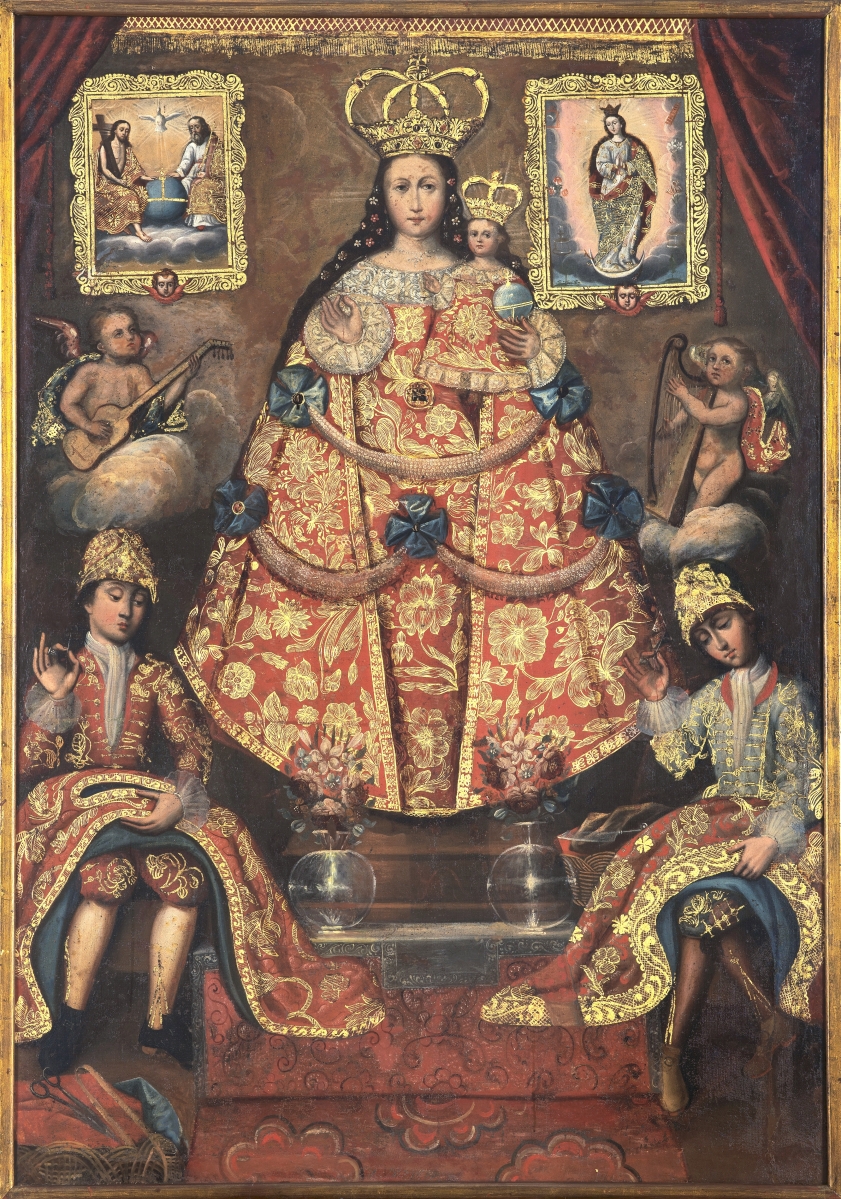
“Virgen de los Sastres (Virgin with Tailors),” Cusco, circa 1750, oil and gold on canvas, 57½ by 40-3/8 inches. Museo Pedro de Osma, Lima, Peru.
Wicha gives credit to the ongoing support of the Carl & Marilynn Thoma Art Foundation, and the show’s organizing spirit, Rosario I. Granados, who is the first Marilynn Thoma associate curator, Art of the Spanish Americas, at the Blanton. The curator prefers that descriptive term to the commonly used “Spanish Colonial” because she feels it most precisely describes the region during this time period.
The spark that inspired the exhibition was Granados’ first contact with the large oil and gold on canvas painting of “Our Lady of Bethlehem with a Donor (Nuestra Senora de Belen con un donante).” As she told Antiques and The Arts Weekly, “I saw that painting when I was teaching a course on religious material culture at the University of Chicago. I went with my students to the Art Institute where it was on display, and I fell in love with the painting. When I was hired by the Blanton, I was able to see it again and there’s so much going on there.”
The painting, now in the Thoma Collection, joined an array of 70 objects included in the exhibition – some owned by the Blanton, others on loan from a wide variety of sources in this country and abroad. Collections in Los Angeles, Denver and Brooklyn, Lima, Mexico City and Madrid all sent important artifacts. In the galleries, “Our Lady of Bethlehem” is carefully displayed and illuminated to show all of its complexity.
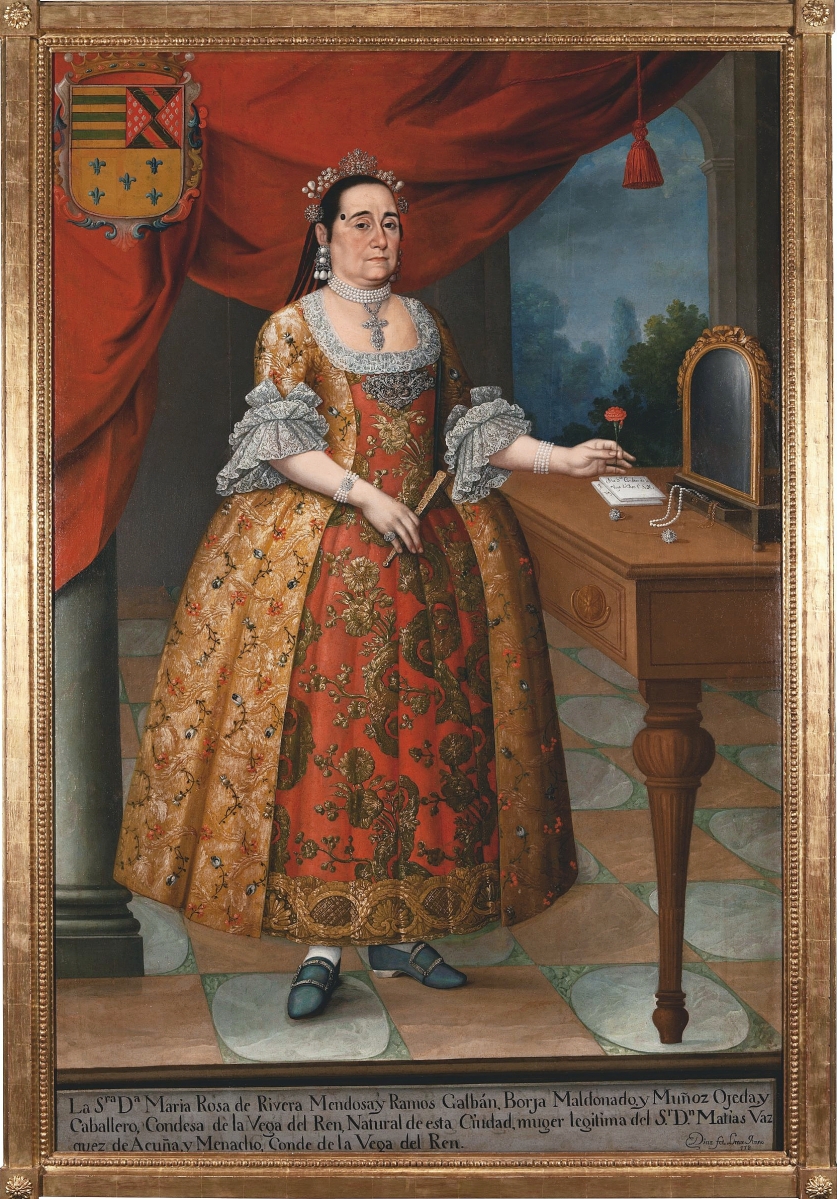
“Portrait of Doña María Rosa de Rivera, Countess of la Vega del Ren” by Pedro José Diaz, Lima, 1781, oil on canvas, 78¾ by 52-3/8 inches. Collection of Carl & Marilynn Thoma.
The curator continued, “I thought I had an opportunity to introduce people to the Spanish Americas through dress and talk about the rich tradition of textile production. The goal from the very beginning was to attract as many people as possible to the art of the Spanish Americas. To tell the story of how complex this area was – but in a different way. I wanted to attract people who were not necessarily interested in Latin America.”
Both the exhibition itself and the accompanying illustrated catalog make a clear separation between the clothing and fabric used for display among lay society and the uses of cloth in the church for sacred garments and hangings. In the galleries, the show is divided into multiple divisions, naturally starting with depictions related to “Cloth Making.”
Even there, an Eighteenth Century painting of the “Virgin with Tailors” suggests divine help in the trade would not be amiss. Another shows a tailor cutting out a pattern for a customer. Also headlining this section is a rare portrait of a seated woman making lace by Jose Joaquin Magon (active 1751-1800), loaned by the National Anthropological Museum in Madrid.
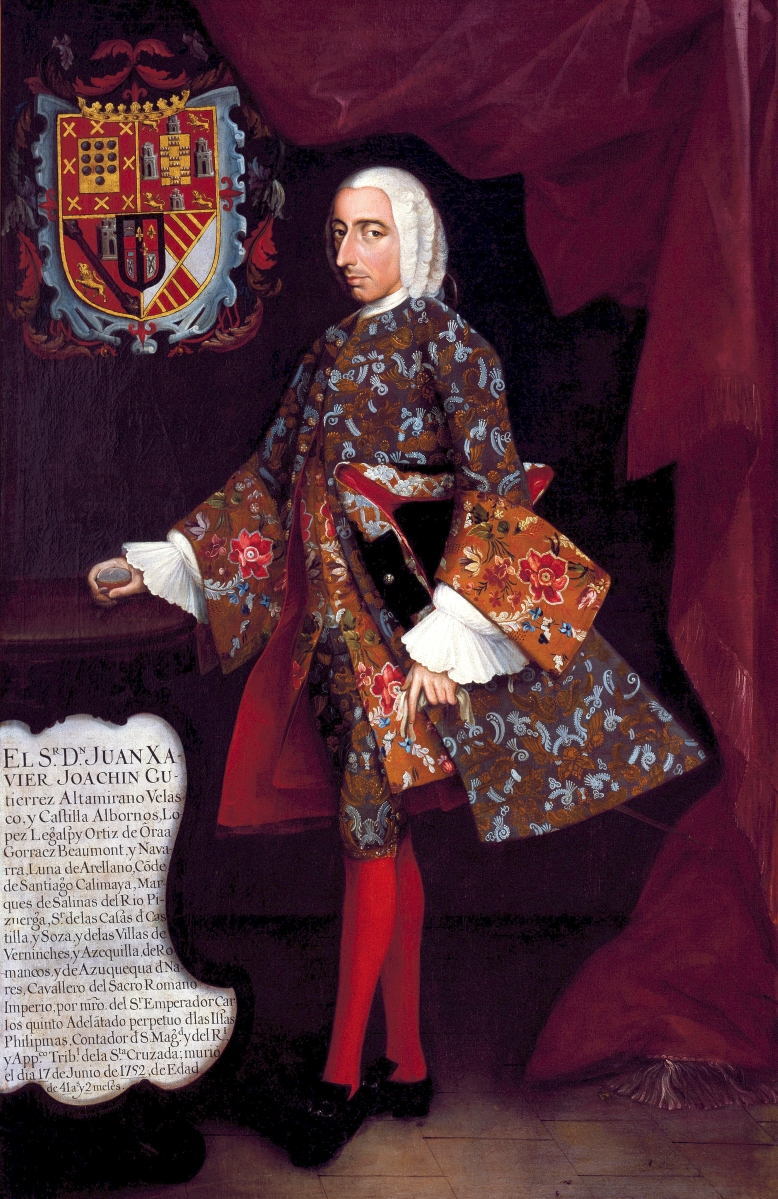
“Don Juan Xavier Joachín Gutiérrez Altamirano Velasco, Count of Santiago de Calimaya” by Miguel Cabrera, circa 1752, oil on canvas, 81-5/16 by 53½ inches. Brooklyn Museum, Museum Collection Fund and Dick S. Ramsay Fund.
Visitors will naturally be drawn to the extensive display of portraits under the familiar topic of “Wearing Social Status,” a motivation that has never faded away in the intervening centuries. The men, women and children – often in family groups – are descendants from both “Old World” and “New World” ancestry. What they chose to put on for a formal portrait defines the styles ruling their era and how the sitters wished to be remembered.
A good example, the circa 1785 “Portrait of Dona Maria Rosa de Rivera, the Countess of la Vega del Ren,” captures a face neither young nor pretty, but the eye is drawn to the magnificent jewelry and the embroidered brocade dress edged with lace. And at this period, men were no slouches. The portrait of the Count of Santiago de Calimaya, on loan from the Brooklyn Museum, features blood red hose and a flared coat that seems about to take wing.
The later sections with their ecclesiastical focus address “Dressing the Sacred,” where even an angel can wear the latest fashions when adapted for wings. Various versions of the Virgin – Nuestra Senora – are draped in the very finest fabrics produced during this period. Furthermore, the material and its embellishments are depicted with almost photographic accuracy, revealing much about their manufacture.
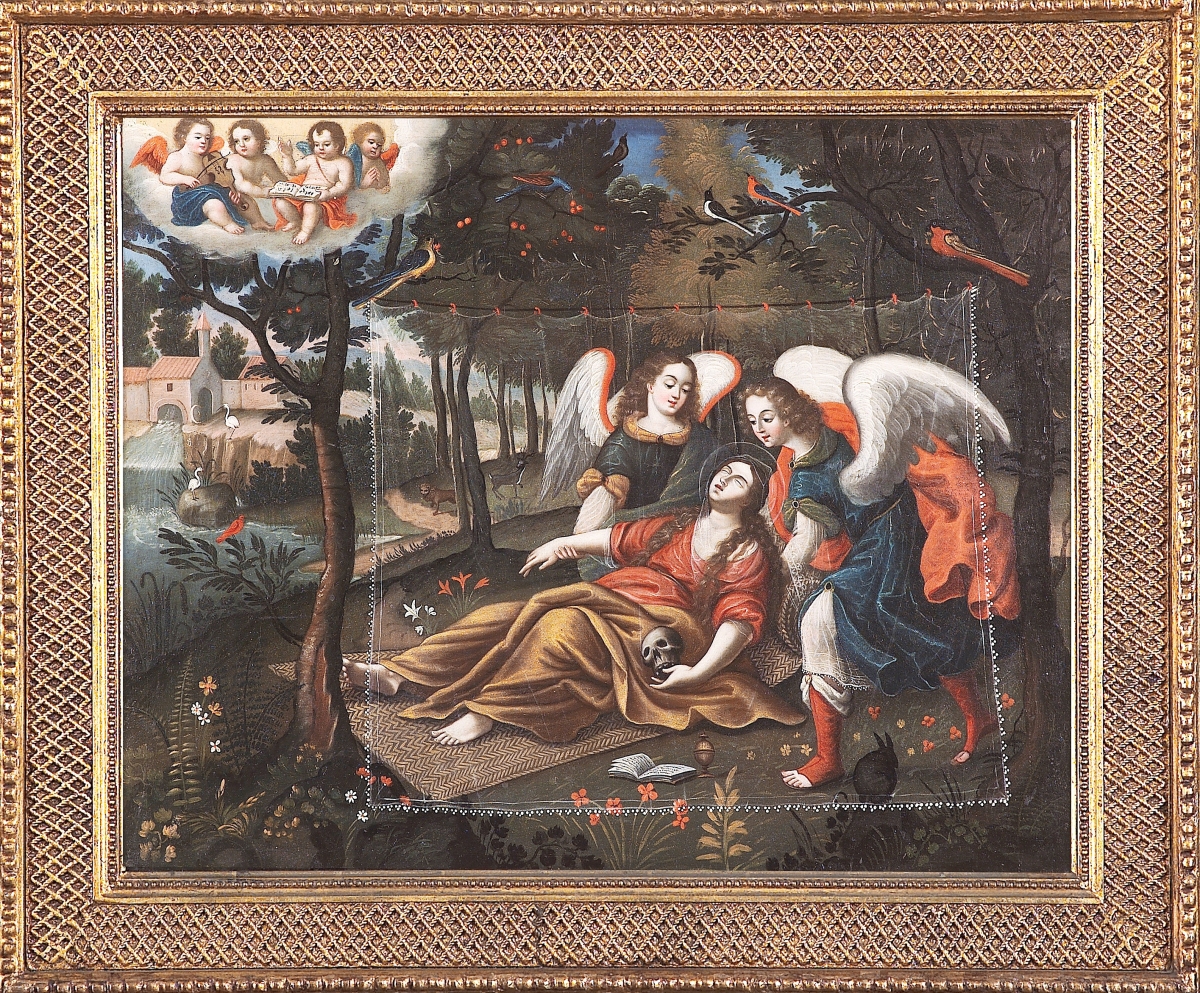
“Ecstasy of Mary Magdalene,” Cusco, Eighteenth Century, oil and gold on canvas, 21¼ by 26¾ inches. Colección Barbosa Stern, Lima, Peru.
Such materials were used in actual practice to drape the altar and figures in the sanctuary and to fashion vestments for the clergy which served there, as explored in “The Holiness of Cloth” and “Ritual Garments.” Another favorite of Rosario Granados displayed here is the circa 1750 “Ecstasy of Mary Magdalene” on loan from a collection in Lima, Peru. The unknown artist has painted an impossibly sheer veil between the viewer and the saint and her supporting angels.
Some exhibits are displayed on mannequins or as they would have appeared in a sanctuary. The curator feels that the installation is particularly effective in involving the viewer with the objects: “You understand them better when you know how they were originally displayed. We tried to make the objects have a conversation between themselves, which I think an exhibition should do.”
“No matter how complicated the world is outside, you also want to be surrounded by beautiful objects. Each culture creates its idea of what beauty is. To be elegant and powerful. There is no one single idea of beauty.”
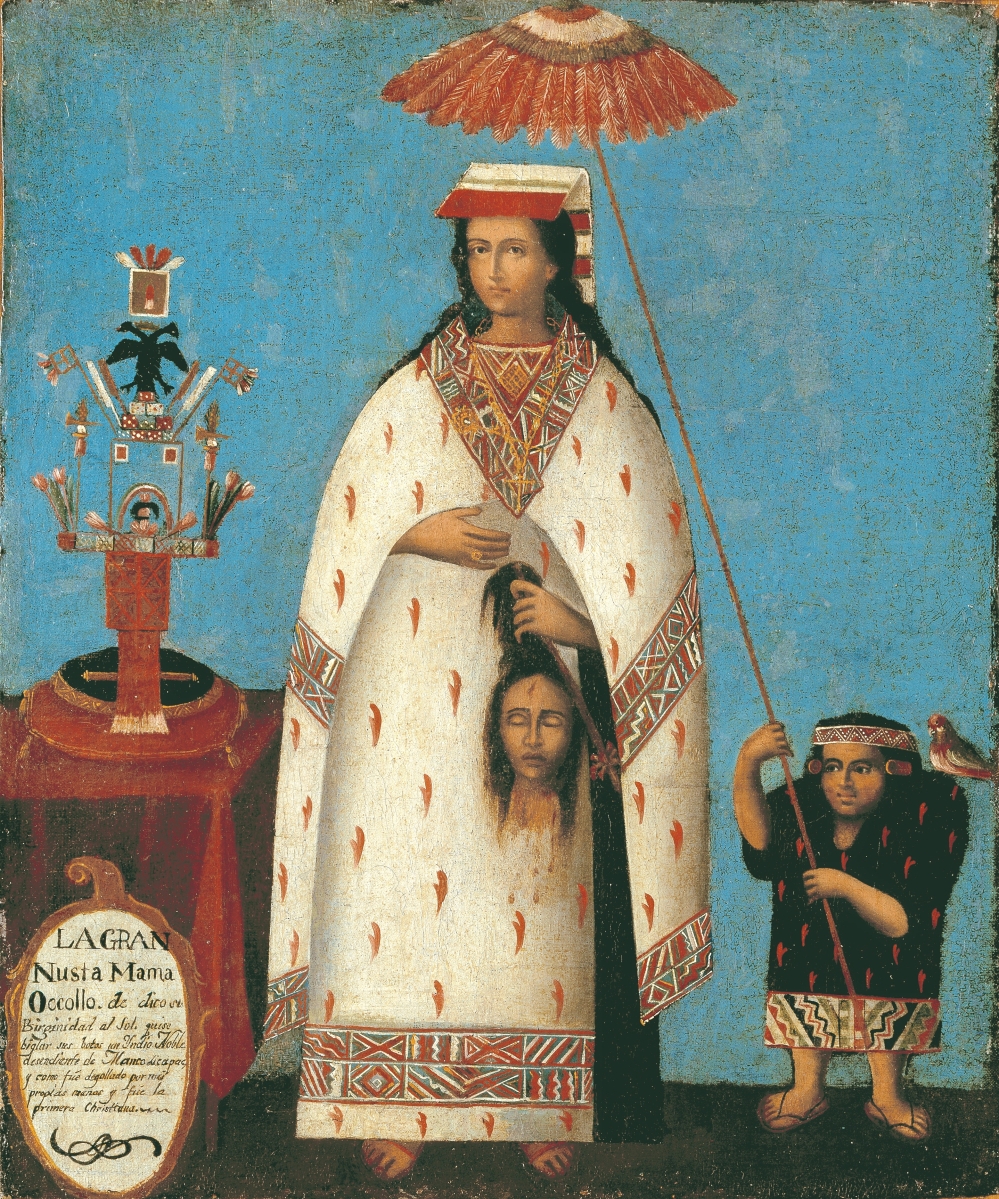
“Inca Noblewoman,” Cusco, circa 1850-70, oil on canvas, 25 by 21¾ by 2¼ inches. Denver Art Museum, Gift of Dr Belinda Straight by exchange and New World Department Acquisition Funds.
The exhibition’s catalog, Painted Cloth: Fashion and Ritual in Colonial Latin America was published in July by the University of Texas Press and features essays by Granados and other distinguished scholars on the intriguing subject divisions explored in the exhibition. The volume can be ordered from the museum and online booksellers.
The museum website has information on a schedule of public programs and lectures – most available via Zoom – connected to the show, which will be on view through January 8.
The Blanton Museum of Art, on the campus of the University of Texas at Austin, is at 200 East Martin Luther King Jr Boulevard. For information, www.blantonmuseum.org or 512-471-5482.









.jpg)





